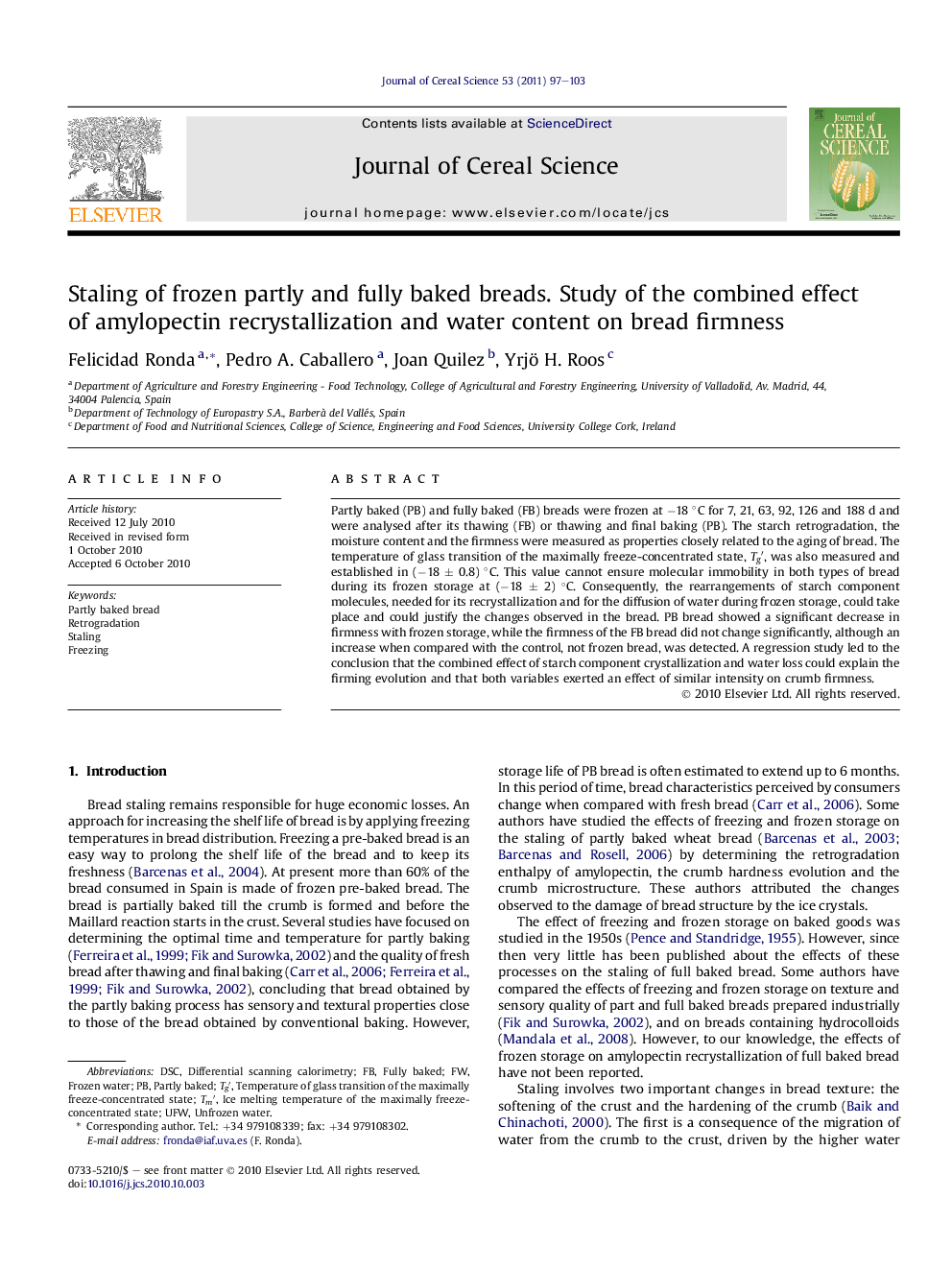| Article ID | Journal | Published Year | Pages | File Type |
|---|---|---|---|---|
| 6378198 | Journal of Cereal Science | 2011 | 7 Pages |
Partly baked (PB) and fully baked (FB) breads were frozen at â18 °C for 7, 21, 63, 92, 126 and 188 d and were analysed after its thawing (FB) or thawing and final baking (PB). The starch retrogradation, the moisture content and the firmness were measured as properties closely related to the aging of bread. The temperature of glass transition of the maximally freeze-concentrated state, Tgâ², was also measured and established in (â18 ± 0.8) °C. This value cannot ensure molecular immobility in both types of bread during its frozen storage at (â18 ± 2) °C. Consequently, the rearrangements of starch component molecules, needed for its recrystallization and for the diffusion of water during frozen storage, could take place and could justify the changes observed in the bread. PB bread showed a significant decrease in firmness with frozen storage, while the firmness of the FB bread did not change significantly, although an increase when compared with the control, not frozen bread, was detected. A regression study led to the conclusion that the combined effect of starch component crystallization and water loss could explain the firming evolution and that both variables exerted an effect of similar intensity on crumb firmness.
